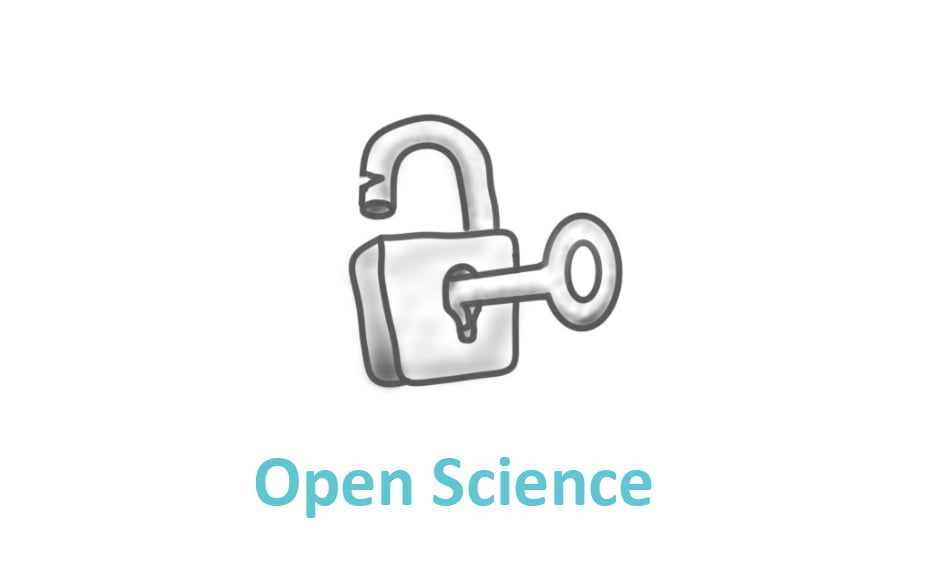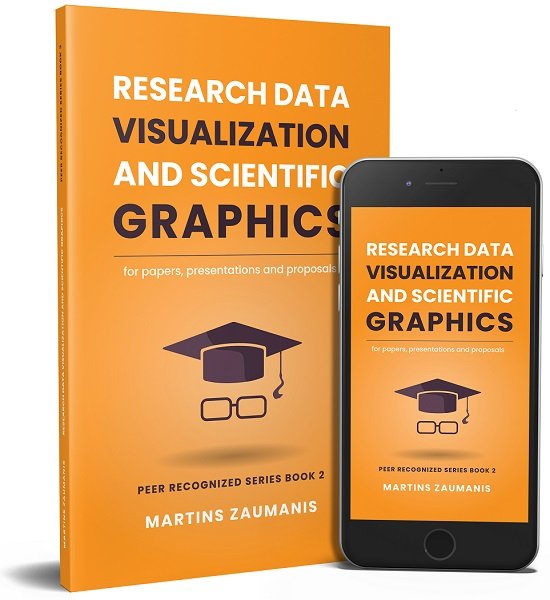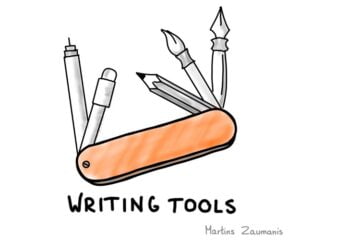
Many things about science are hidden, even though they should not be. The open science movement advocates for freely accessible papers, shared research data, full research methodology, machine-readable repositories, and many other forms to promote widely disseminated research results.
Open science can enable furthering particular research, verifying its reproducibility, allowing to perform meta-science studies on groups of research results, and permit gaining new insights by combining many data sets using machine learning algorithms. Such abilities will surely facilitate more efficient knowledge creation and can even open new research directions.
In this post you will find open science tools for these tasks:
Let’s look at freely available open science tools for performing each of these tasks.
Open-access scientific publishing
Broadly speaking, access to articles can be divided into three large groups.
Closed access is the traditional form of scientific publishing. In this mode, once an article is published, it no longer belongs to you. You can share article copies privately, but may not make them public.
Green open access allows you to share either the reviewed (post-print) or originally submitted (pre-print) manuscript of your paper to certain websites or repositories. Often there is an embargo period of 6-24 months before sharing is allowed to give the publisher the chance to recoup its investment (certain journals may also allow sharing the published version after an embargo period).
Gold open access publishing retains the copyright to the author. This makes the final paper free to download for anyone from the journal website and allows unrestricted sharing online. Since the publisher in this case does not get to charge the reader, it is often the author who has to pay a fee for publishing. There is also a caveat: many closed-access journals offer unrestricted access to a specific article against a fee from the author. This so-called “hybrid gold open-access” mode is not encouraged by many scientific institutions because they essentially have to pay the publisher twice – once for the subscription and on top of it – a publication fee.
All other things being equal, publishing in a gold open access mode should be the preferred option because more people will be able to read and learn from your research. The problem is that all things are not equal. A particularly large problem is the so-called predatory open-access journals offering a lightning-speed review process at no cost to you. Be wary about such offers and do thorough homework before selecting the journal. Here is an article that shows how to do it.
Directory of open access journals provides a search tool to find gold open access journals. It also provides useful information about them, including publishing charges and information about the copyright agreement.
Transpose – a search tool to find and compare the policies of different journals towards sharing the published papers, the preprints, the embargo periods, and other information. It is a crowd-sourced platform so do not take it for granted that it holds the most up-to-date information.
Publishing of paper preprints
A lot of closed-access journals allow the publishing of paper preprints (the manuscript before peer review) through repositories and personal websites. The journal websites hold this information, but to make things easier, use Sherpa/Romeo database. It helps to navigate the copyright agreements of different publishers by showing how you are allowed to share the submitted, reviewed, and published versions of the paper.
In fact, most journals allow publishing papers even before they are accepted to the journal. The advantages of this approach are the quickness at which the results can be shared with the world and the possibility to receive feedback even before starting the official peer-review process. The drawback is the lack of the quality stamp that the peer-review process and acceptance in a respected journal provide.
Below is a video by iBiology explaining how preprint publishing works and here are answers to some common questions on the ASPAbio website.
These are the best-known preprint repositories.
arXiv – Launched in 1991 this is the oldest and best-known paper preprint server. It is operated by Cornell University and is mainly intended for the fields of mathematics and physics.
ChemRxiv – a preprint server for papers in chemistry.
BioRxiv – for preprints of research in biology and life sciences.
MedRxiv – preprints in health sciences
PsyArXiv – a preprint server for papers in psychology
RePEc – preprints in economics
SocArXiv – preprints in social sciences
General data repositories like Zenodo and FigShare can also be used to publish preprints.
Data repositories for storing and sharing research data, code, and methodology
In 2016, a paper by Wilkinson et al. FAIR Guiding Principles for scientific data management and stewardship the authors provide guidelines to improve the Findability, Accessibility, Interoperability, and Reuse (FAIR) of research results. This and similar open science initiatives emphasize the importance of thorough meta-data, identifiability (e.g. DOI), and machine-readability. The Go-FAIR website offers a more thorough overview of the FAIR principles.
Here are some non-profit data repositories that fulfill the FAIR principles:
EDUAT – sustained by a network of more than 20 European research organizations, EDUAT can be used for sorting, managing, and sharing research data of any form.
Harvard Dataverse – hosted by Harvard University, this data repository offers free storage of research data. Like all of the services in this list, it will assign a Digital Object Identifier to your data to ensure it is credited to you.
Zenodo – developed by the EU-funded project ApenAire and hosted by CERN. The repository is particularly useful for EU-funded projects because it allows directly reporting to the EU research Participant Portal.
Dryad – originally developed with funding from the US NSF, Dryad can be used for data sets of any type that correspond to a research paper. The data is curated and the users are charged for submissions.
Here are some well-recognized data repositories, owned by private companies:
GitHub – owned by Microsoft, GitHub has become the default data repository for coders. 500MB of private and unlimited public space is offered for free.
Figshare – owned by Digital Science, Figshare provides a DOI for all published files, regardless of the file format. 20GB of private and unlimited public space is offered with a free account.
Protocols.io – designed for sharing research methodology, descriptions of clinical trials, and computational workflows. Owned by ZappyLab, Inc.
If these repositories do not fulfill your needs, look into the Registry of Research Data Repositories to find more.
Search engines for finding research data
On the receiving end of open science, we need tools that help to find the type of data that we are looking for. Here are data repository search tools:
OpenAire – an EU-funded search engine of data repositories offering useful filters and allowing you to directly download the selected data.
Share – a US community initiative that allows searching many repositories, focused on data produced in the US.
Of course, any of the data repositories that we reviewed earlier also allow searching for data in their own database.

Learn to create data visualizations that tell a story and draw attention to your papers.
Scientific literature search
Google Scholar and Science Open are some of the best free search engines for scientific articles. They also offer statistics about the citation count and the performance of the authors.
Unfortunately, unless you are working from the PC of your university and this university has paid for accessing the article you want to read, many of them will remain hidden behind a paywall. This is ridiculous because science is supposed to be available to anyone. So why can’t we access the research results, especially because for most of the research we have paid through taxes?
This paradox of the scientific publishing business aside, here are some tools that will help you find research papers that publishers would like you to pay for:
Unpaywall allows finding the submitted versions of papers that are otherwise hidden behind a paywall. It’s a great tool that you can add to your web browser. Once you have installed it, visit the journal webpage of the paper that you would like to read and you will see a green sign if there is a free version available.
Open Access Button is a reach engine that, similar to Unpaywall, will search repositories to find a free version of the paper that you want to read. If there is no free paper available, it can even request the authors to upload it on a preprint server and you will get an email notification if they do. Also available as a browser plugin.
Sci-Hub – not that I would ever recommend using it, but Wikipedia tells about someone in Kazakhstan who got pissed by the high price tags for accessing research papers and made an illegal website that allows you to download them for free.
CitationGeco – is a visual way to find literature about the topic that interests you. First, you will have to select at least five papers on the topic that interests you. The web app will then find papers that these papers cite or are cited in. You will visually see nods of different sizes depending on the number of citations, allowing you to find other papers relevant to the topic you are researching.
How to fulfill open science requirements of funding agencies
Many funding agencies will require you to submit, along with the research proposal, a plan for managing research data and sharing the results. Each agency, of course, should describe what is necessary on their website, but to get an overview of the requirements from many agencies, you can use the Sherpa/Juliet database.
One thing that is often required by research funding agencies is a data management plan. Such plans have to indicate what data will be created, how will it be created, and describe the procedures for data sharing and preservation.
Science Europe has published a practical guide for preparing a data management plan and the UK’s Digital Curation Center offers a helpful checklist for creating a data management plan.
Sherpa Fact is a search engine that allows determining if your selected journal compiles with the requirements of the agency that is funding your research.
Researchers and open science
Scientists themselves are also a part of open science. Everyone should have the means to find information about researchers and their accomplishments. The traceability of research papers and data is a crucial part of this process and an ORCID number is a universal approach to identifying the work of scientists. If you don’t have one yet, go ahead and create a profile.
Now that scientific output can be linked to the scientists, we need tools that can aggregate it and show the performance. In the article Measuring a Scientists Worth, I described the three levels of academic performance indicators. Here are some of the tools from the article:
Mendeley – Shows all kinds of statistics, including citation count, h-index, downloaded papers, etc. You will need to register a profile to see it. Owned by Elsevier.
Publons – Originally developed for tracking peer reviews, but now offers a range of researcher’s performance statistics. Owned by Clarivate.
Google Scholar – The go-to academic search engine also offers performance stats of the users who have created a profile.
Open science will keep advancing only if we encourage it
Currently, open science is still facing many problems, including sorting, labeling, curating, storing, sharing, and copyrighting. Clearly, something more than the good intentions of a single researcher will be required to overcome these issues. But if you happen to be in a research field or work in an institution that is among the forerunners of open science, jump on the train. Following the open science principles will increase your credibility and serve the greater good of advancing science in general.
A guide for writing papers that get cited
Knowing how to write research papers can make the difference between being invited to apply for a tenure track position and sending out CVs to random professors in the hope of a miracle.
Hi! My name is Martins Zaumanis and in my interactive online course Research Paper Writing Masterclass I will show you how to write research papers efficiently using a four-step system called “LEAP”. You will learn to to visualize your research results, frame a message that convinces your readers, and write each section of the paper. Step-by-step.
And of course, you will see how to answer the infamous Reviewer No.2 🙂






